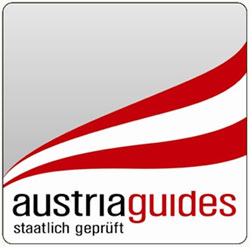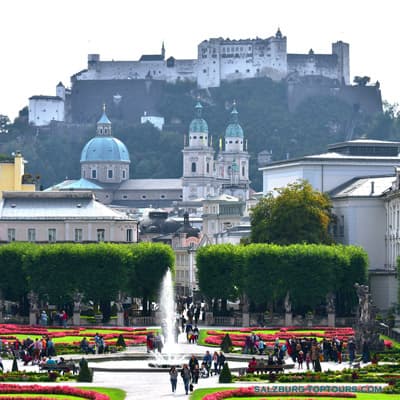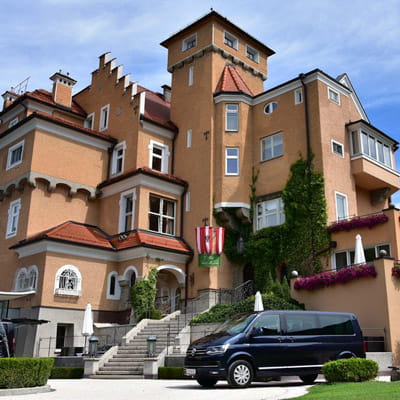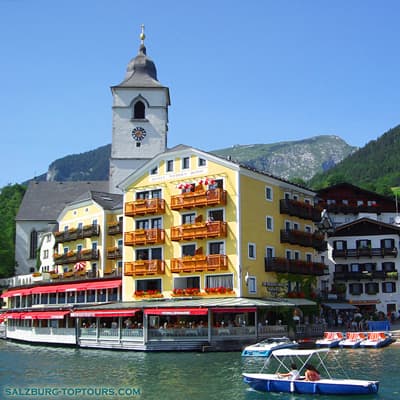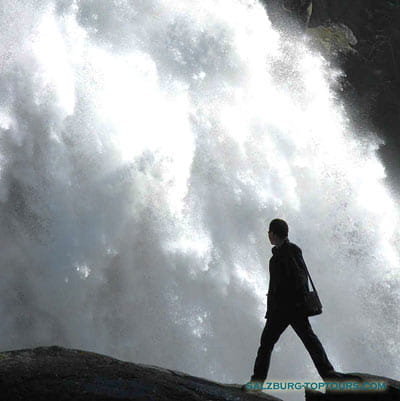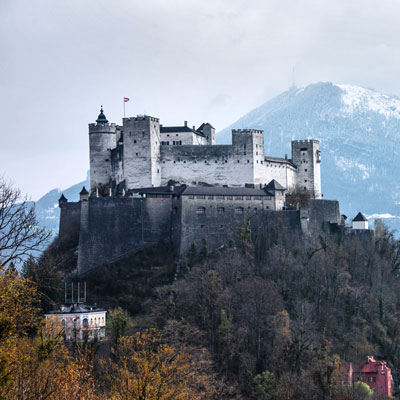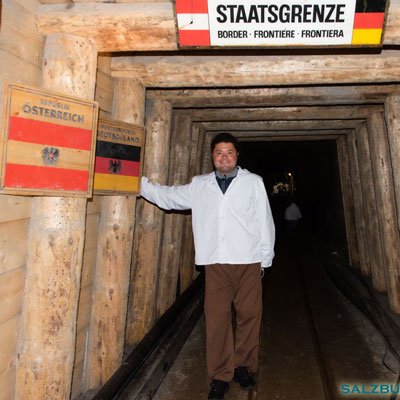Expert Tips for Your Austria & Salzburg Trip Planning from a Local Guide
Dear travelers! As a professional tour guide in Salzburg, I often receive questions about planning a trip to Austria. Based on these questions, I'd like to share some tips to help you plan and ensure a pleasant, memorable journey.

1. Which time of year is the best to visit Austria?
Austria is a beautiful alpine country with a diverse range of attractions, and each season offers something special. However, the availability of certain attractions varies depending on the time of year. It’s important to know which sites are open during each season to make the most of your visit.
The summer season is from May to the end of October. This is the time with a wide range of activities and maximum access to attractions. Everything is running, everything is open. The long daylight hours allow for long trips, walks and excursions. On the other hand, there are inconveniences associated with crowds and queues at popular tourist destinations. For example, the famous town of Hallstatt is rather overrun with tourists during the peak summer hours.
The winter season is from November to the end of April. Winter brings its magic with Christmas markets in December. The snow is perfect for sledding and skiing from January to March. If you are a winter sports fan, this is the ideal time to visit the Austrian Alps. Early spring, from March to April, is also a great time to take advantage of the off-season, with many sunny days, warm temperatures, and lower hotel and service costs. There are no lines and crowds at popular tourist attractions.
Tip: Before traveling to Austria, check the availability and opening hours of the places you plan to visit. The following attractions are closed during the winter season: The Eagle's Nest in the Bavarian Alps, The Giant Ice Caves, Five Fingers Platform in Hallstatt, Trick Fountains in Hellbrunn, and Panoramic Road Grossglockner Hochalpenstrasse.
Read more: Climate and weather in Austria.

2. Which is better when traveling in Austria and Bavaria — staying in cities or in the countryside?
The choice between staying in cities or rural areas largely depends on your preferences and travel plans. If you don't plan to drive, I recommend staying in larger towns. Then you'll have easier access to public transportation, a wide range of tourist services, and proximity to major attractions. If you prefer the tranquil atmosphere of the countryside, you can certainly stay in a village and enjoy the stunning nature of Austria. However, be prepared to spend more time traveling to popular attractions. Also, booking tours from the countryside will require extra planning and expenses. Keep in mind that Austria can be quite expensive, and booking services from a remote village often costs significantly more than arranging them from a larger town or city.
Read more: Public transportation in Salzburg

3. What are the travel distances between destinations in Austria?
When planning a route, it's essential to consider the distances between destinations. Although Google Maps is a helpful tool, it doesn't always accurately estimate travel times, especially when routes pass through towns or rural roads. Always take the length of your journey with time to spare, with breaks for toilets, coffee and photo opportunities. Example: I recently received a request, "Eugene, we would like to book a tour of Salzburg and Hallstatt, but we only have four hours for everything. Is this possible?" Definitely not. A one-way trip to Hallstatt takes about 1.5 hours. If you add time for stops, sightseeing and the return trip, it would be impossible to fit the itinerary into such a short time.
Tip: If you aim to relax rather than rush, always plan your visit with more time to spare.
Read more: Lake District Tour with Hallstatt
4. How many places should I include in my itinerary while traveling through Austria?
The three most visited cities in Austria by tourists are Vienna, Salzburg, and Innsbruck. When exploring these cities, I suggest selecting two or three main sights each day that truly interest you. If you find you have extra time, you can always add more. It’s best not to pack your day with too many distant locations. Focusing on one or two attractions allows you to really enjoy the experience, rather than rushing through several. Keep in mind that during peak season, popular spots can have long queues. For instance, a boat trip on Lake Königssee in the Bavarian Alps is best planned as a full-day excursion in high season—you never know how long you'll wait at the ticket office or for the return trip.
Try to avoid remote places with strict tour schedules. For example, a recent request: "Eugene, we would like to book a tour from Salzburg to Neuschwanstein Castle in Bavaria. Is that possible?" Anything is possible. But you should keep in mind that it takes more than three hours to get to the castle. You need to buy your ticket weeks in advance. Even a slight delay will invalidate the ticket, and in high season, it is almost impossible to buy one on the spot. On a trip like this, being organized and on time is crucial.
Tip: If the attraction is several hours away, it's better to stay overnight and visit more interesting places along the way.
Read more: Multi-day tour from Salzburg to Munich through Tyrol and Bavarian Castles.

5. What interesting events take place in Salzburg over the course of the year?
When planning a trip to Austria, it's helpful to research what each city is known for and which major events regularly take place there. While you may not find a complete list of upcoming events, information about established festivals and traditions is readily available. This can help you tailor your itinerary. For example, if you are currently planning to visit Salzburg in mid-November, you might consider postponing your trip for a week or two to wait for the opening of the Christmas markets and Krampus runs, which typically take place in the last week of November.
If you're a fan of opera or symphony concerts and are planning to attend the Salzburg Music Festival, the second half of the 40-day festival will be decidedly quieter. By this time, the excitement around the premieres has died down and it becomes easier to buy tickets in the cheaper categories.
Tip: My Salzburg Guide BLOG can help you better understand Salzburg’s event calendar and plan your visit around the experiences you want to enjoy. Whether you’re looking to immerse yourself in the festive atmosphere of the Christmas markets or experience the elegance of a summer music concert, my blog offers insights and recommendations to make your trip even more memorable.

6. Would Austria be a good country to explore with children?
Austria, particularly the city of Salzburg, is a fantastic destination for family travel. Salzburg offers a variety of family-friendly attractions, including the Toy Museum, Puppet Theater, Natural History Museum, zoo, the impressive Hohensalzburg Fortress, trick fountains, and plenty of playgrounds. However, when traveling with young children, it’s essential to avoid overloading them with too many transfers or activities. Be sure to schedule ample breaks for meals and playtime. It’s also crucial to check which attractions are appropriate for your child’s age. For example, children under five are not allowed in the salt mines, and many natural sites—especially in the mountains—require long walks. The well-known "Five Fingers" viewing platform near Hallstatt, for instance, involves a 30-minute uphill hike on a gravel trail from the cable car station, making it very challenging to navigate with a stroller. Likewise, the famous ice caves are not recommended for children under 10 due to the demanding climb.

7. Are children permitted to sit on their parents’ laps when there aren’t enough seats available in the vehicle?
No. All children must be properly secured in an appropriate car seat according to their age and size.

8. How can I find a certified guide in Austria?
AUSTRIA GUIDE is a regulated profession. Official guides in Austria are certified by the Chamber of Commerce. A list of licensed AUSTRIA GUIDES can be found on findaguide.at.
If you're flying into Vienna or Munich and plan to stay for a few days, it's best to look for guides or tour companies based in that city. It's strongly recommended to contact a local guide directly rather than booking through large platforms. With some online research, you'll discover plenty of excellent options, like my website :)
The guide’s location plays a key role in ensuring both quality and cost-effectiveness. For instance, I often receive requests to meet travelers at Vienna Airport, conduct a tour, and then accompany them to their hotel in Vienna. Unfortunately, I’m unable to offer this service—Salzburg, where I live and work, is about 3.5 hours from Vienna Airport, making such arrangements impractical and costly.
If you're planning to travel from Vienna to Salzburg, I can arrange a scenic transfer with several fascinating stops along the way. The same service is also available for trips from Munich.
Read more: Sightseeing transfer Salzburg - Vienna, Sightseeing transfer Salzburg - Munich
9. What is the best way to get to Salzburg?
Salzburg is easily accessible by air, with flights available from major cities such as Frankfurt, London, Palma, Istanbul, and Amsterdam. If you're flying into Vienna Airport (320 kilometers / 200 miles away) or Munich Airport (180 kilometers / 100 miles away), these are convenient hubs for travelers heading to Salzburg.
For those traveling by train, rail travel is the most common and comfortable option. There is a direct train from Vienna Airport to Salzburg every hour, with the journey taking about three hours.
If you're looking for an affordable option, I recommend taking Flixbus, which offers budget-friendly connections between cities and countries, including Salzburg.

10. How can I save money when visiting museums in Austria and Germany?
Many cities and regions in Austria and Germany offer tourist cards that provide free or discounted access to museums, attractions, and public transportation. In Salzburg, for example, visitors can purchase the Salzburg Card. In the nearby Bavarian resort area of Berchtesgaden, the Berchtesgadener Gästekarte is available, and in the scenic Lake District, the Salzkammergut Card is available.
These cards can offer significant savings, especially if you plan to visit multiple attractions and use public transport frequently. In some cases, the cost of the card can be offset by visiting just one attraction. For instance, a ride on the Untersberg cable car near Salzburg typically costs €35. However, with the Salzburg Card, which is priced at €31, the cable car ride is included—along with free bus transport from the city center to the cable car station.
Tip: Before purchasing a tourist card, check which attractions are currently open, especially if you're traveling during the off-season. Some sites may be closed or operate on limited hours depending on the time of year.

11. What are the best places to visit by yourself in Salzburg?
After taking an informative city tour of Salzburg, there are plenty of wonderful places to explore on your own. Here’s what I would recommend:
- Hangar-7: Visit Red Bull's airplane and Formula-1 exhibition (currently closed for restoration until the end of May).
- Hike the town hills: Explore the stunning views from Kapuzinerberg and Mönchsberg.
- Lunch and Beer at Augustiner Bräu Stübl: Enjoy a local beer and hearty Austrian meal at this cozy brewery (opens at 3 p.m.).
- Untersberg Mountain: Take a hike or ride the cable car to this beautiful mountain, offering breathtaking views.
- Gut Aiderbichl Animal Ranch: Visit this sanctuary for rescued animals for a peaceful and heartwarming experience.
- Live Music at Shamrock Irish Pub: If you enjoy music, stop by the Shamrock Pub for live performances (from 9:30 p.m.).
- Mozart Dinner Concert: For classical music lovers, this event offers a delightful evening of dinner and live classical music.
These activities offer a great mix of Salzburg's natural beauty, culture, and local charm!

12. What is Austria's official currency and can we pay in Dollars?
Austria's official currency is the EURO, and it's impossible to pay in Dollars anywhere. While most museums, cafes, and restaurants accept credit cards, some small businesses and specific establishments may not have credit card terminals. For example, at Salzburg's Augustiner Brewery, only cash payments are accepted. Similarly, many certified Austria Guides do not carry credit card terminals. For this reason, it's wise to have some cash on hand, especially when visiting smaller establishments, local markets, or traditional venues where card payments may not be available.
13. Are there currency exchange offices in Austria?
Currency exchange is generally available at banks on weekdays. For instance, you can exchange currencies at Raiffeisenbank located at Schwarzstrasse 15 in Salzburg. Bank ATMs are accessible 24 hours a day for cash withdrawals. However, it's recommended to use ATMs at banks and avoid third-party machines, as they often charge higher fees for withdrawals.
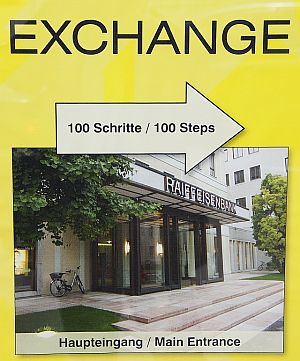
14. What is the official language spoken in Austria?
German is the official language of Austria, spoken with a range of regional accents. However, most Austrians understand and speak at least basic English, so communicating in English shouldn’t be a problem during your visit.
That said, learning a few local words and phrases is a thoughtful way to show politeness.
Standard greetings are - Grüss Gott, Servus, or simply Hallo.
Thank you - Danke or Danke schön.
Goodbye - Auf Wiedersehen or Ciao.
Please or You're welcome - Bitte or Bitte Schön.
By ordering coffee, you can say - Ich hätte gern einen Verlängerten or Cappuccino.
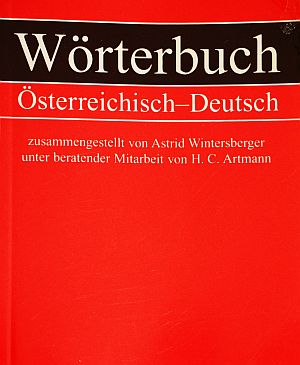
15. What are the temperatures like in Austria?
Austria, being an Alpine country, experiences a wide range of weather conditions, from clear, sunny days to gloomy, overcast skies. Temperatures vary significantly depending on the altitude, geographical location, and season. During the summer, temperatures range from +15 °C to +35 °C (60°F to 95°F), while winter temperatures range from -10°C to +10 °C (14°F to 50°F).
Read more: Climate and Weather in Salzburg, Austria.

16. Can I visit both Salzburg and Hallstatt in one day by train from Vienna?
I wouldn’t recommend trying to visit both destinations in one day by train—it’s quite a stretch. To truly appreciate the experience, I strongly suggest spending at least one night in Salzburg.
However, if you're short on time, here's an itinerary I suggest you:
Start Early: The train ride from Vienna to Salzburg takes about 3 hours.
Explore Salzburg Old Town: Plan for around 3 hours to stroll through the historic center and enjoy a short lunch.
Travel to Hallstatt: The scenic drive takes roughly 2 to 2.5 hours, allowing time for a few photo stops along the way.
Visit Hallstatt: Spend at least 1.5 hours exploring the town (not including additional activities like salt mine tours or boat rides).
Return to Salzburg or drop off at the nearest train station to Vienna: Set aside another 1.5 hours for the drive back.
Remember that daylight hours are shorter between November and March, so be especially mindful of time if you're traveling during winter.
Read more: Day tour from Vienna to Salzburg by train.

